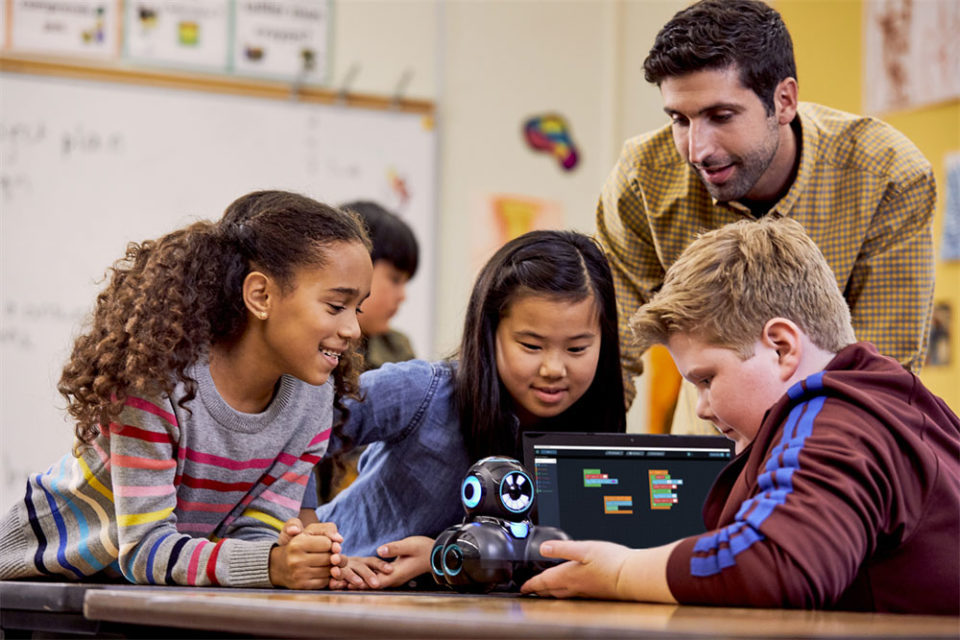Europe desperately needs STEM skills. International assessments show that one in four adults in Europe lack basic skills in numeracy . By 2030, there will be 50 million open vacancies worldwide for positions requiring STEM skills. And skepticism of science, research and fact-based arguments in public discourse is on the rise. To reverse this trend, European education leaders, along with policymakers and industry partners, recently came together at the STEM Alliance High Level Event on STEM Education to explore solutions.
Opening the event, Malta’s Minister for Education Evarist Bartoli underlined the possibility of implicating STEM-based approaches in sustainability and environmental challenges, which are increasingly of interest to all young people. This could also help to overcome one of the biggest challenges: the lack of girls interested in pursuing STEM studies and careers.
STEM jobs remain dominated by men. Eurostat investigations found that, in 2017, of almost 18 million scientists and engineers in the EU, 59 percent were men and 41 percent women. While this is a slight improvement on previous years, progress is still too slow. The lack of women currently visible in STEM careers also has an impact on the future talent pipeline.
Microsoft research into this topic has found that ensuring students have a diverse range of role models is essential in young people – and especially girls – to pursue STEM studies. Other tactics include demonstrating the creative potential of STEM subjects within other fields and giving pupils the opportunities to gain hands-on, practical experience with STEM from an early age. European Ministries of Education concur with these findings with Marc Durando, Executive Director of European Schoolnet, the network of Ministries of Education in Europe stating:
“STEM teaching based on real industry applications is essential for students. Teacher placements in industry is also of key importance, as well as proposing appropriate role models for students, and presenting current and future STEM jobs in an attractive way. That is why cooperation between education and industry is so necessary.”
Meanwhile, research from European Schoolnet (sponsored by Microsoft) has also emphasized the need to integrate technology into STEM teaching and learning, as a way to make the subjects more appealing, engaging and accessible to a wider range of students.
Microsoft believes in taking an integrated approach to this challenge, weaving technology into STEM teaching at different levels and in different ways. For instance, we bring hands-on activities to schools through programs such as Make Code: this includes partnerships with Micro:bit and Lego to enable even the youngest students to start coding and creating through technology.
As pupils gain in experience, they can transition to inquiry-based projects using our Hacking STEM resources, which teach essential data science skills as well as encouraging creative applications of technology. Learning through playing is another way to encourage students to apply STEM skills: the Minecraft: Education Edition is tailored to this goal. Using the tool, Minecraft Mentor teachers provide lesson plans, ready-made Minecraft worlds, and peer-support for colleagues.
Many of these tools are implemented in classrooms across Europe by Microsoft Innovative Expert Educators, teachers who go above and beyond to inspire their students with creative thinking and innovative teaching practices. One such individual is Selçuk Yusuf Arslan from the Ataturk Vocational and Technical High School in Turkey, whose focus on encouraging more girls into coding using Micro:bit has so far engaged over 1,000 students. His efforts were recognized when he was awarded the Diversity in STEM prize for STEM activities at the recent STEM Alliance High Level Event.
Microsoft works closely with partners such as European Schoolnet and the STEM Alliance to disseminate these technologies and tools as widely as possible across Europe’s classrooms. Together with educators, policymakers and industry peers, we can bridge the STEM skills gap and ensure every European student has the skills they need to succeed.





